In my book Creative Visualization For Dummies, I introduce a useful visual device I call a Wheel of Emotion, which I think you will find helpful in any personal improvement program. It has a similar name to another design, the Wheel of Emotions, by Robert Plutchik so, because he thought of his wheel (or, more precisely, cone) first, let’s take a look at that first:
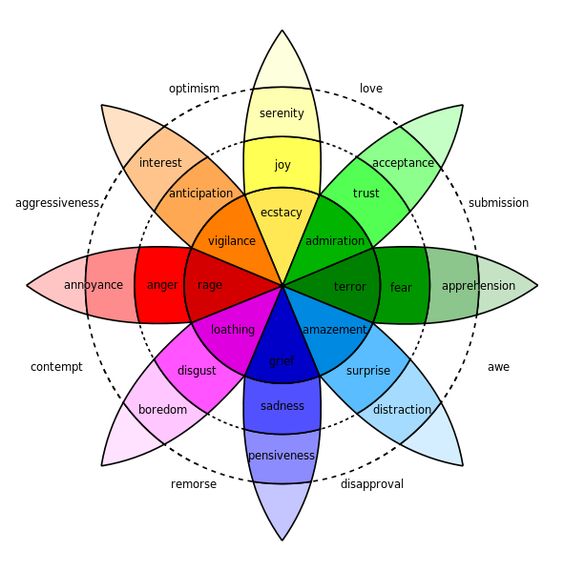
What Is The Wheel Of Emotions
With this diagram Plutchik demonstrates a selection of major human emotions, how they are related to each other, and how they are different too (or bipolar as he calls the emotions on opposite sides).
At the center of this wheel, there are eight basic emotions (as he refers to them) such as ecstasy and grief. Then each of these is connected to two more subtle emotions that lead to what Plutchik calls the eight advanced emotions – those around the outside.
Related: Wheel of Emotions Quiz: The Color You Choose Reveals Your True Nature
For this wheel to work well you need to cut it out and attach each of the ‘leaves’ to each other such that acceptance is alongside apprehension, for example, and annoyance next to boredom.
The result is a three-dimensional cone shape. It’s a neat idea and one that’s used in many fields of psychology and is also featured on dozens of different Wikipedia pages, for example.
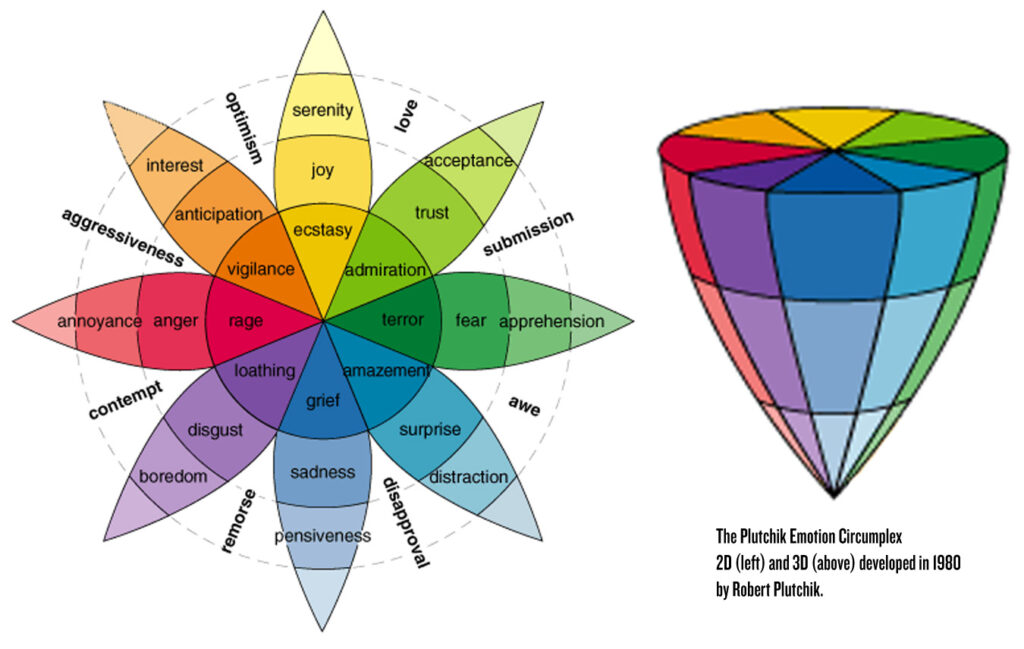
However, I was creating a two-dimensional representation of emotions and how they relate to each other so that I could use it to illustrate books and on slides, and had already assembled my own list of emotions and drawn them into a simple diagram before I discovered Plutchik’s wheel during a Google search – since I wanted to see if anyone else had come up with a similar idea.
Anyway, I was pleased that someone had (so I was on the right track) but particularly happy that Plutchik’s wheel wasn’t represented in the same way as the diagram I had been envisioning. Also, Plutchik’s view of what counted as ‘basic’ and ‘advanced’ emotions didn’t sit well with my way of thinking.
What is interesting, though, is that we independently came up with similar diagrams to help visualize emotions. In the end, after comparing Plutchik’s design and my own rough sketches, I decided that they were sufficiently different not to abandon my own wheel and, instead I completed it, with the result as follows:
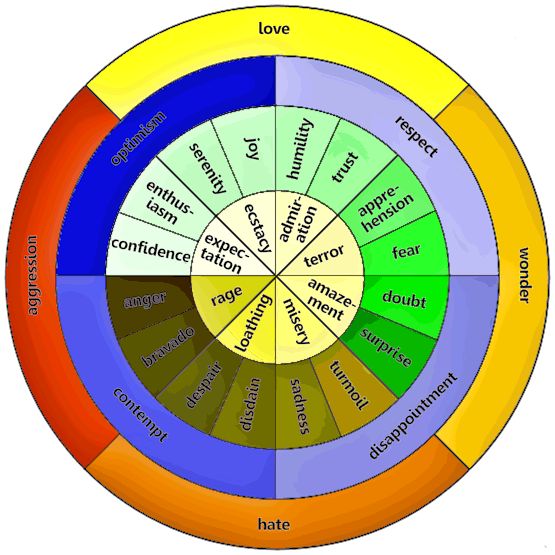
My Wheel of Emotion
Both wheels have 32 emotions, many of which are the same. However, several are different in my wheel. For example, for me, boredom, vigilance, interest, distraction, and submission (as used by Plutchik) are not exactly emotions.
To my mind, they are ways of thinking (or not thinking) and not actually what I would refer to as emotions that you feel. On the other hand, Plutchik includes a couple of actual emotions that I don’t, such as disgust and pensiveness.
My reason for this omission is that 32 is a nice number of emotions for splitting into many equally sized sections of a circle – also I had to stop somewhere, and 48 or 64 emotions would probably be overkill.
Related: The 7 Stages Of Change (And How To Cope With The Emotions Of Each One)
Using my wheel
The purpose of my wheel is also more precise than Plutchik’s. While his is intended more as an analysis tool for emotions in general, mine is presented as an aid to creative visualization and other personal improvement techniques.
The idea is to stare at the wheel and read all the different emotions, casting your eyes around it until you settle on a spot that seems to represent your current inner emotional makeup.
Because emotions that are next to each other in my wheel are more closely related to each other than those that are separated from each other, you can then choose a spot on the wheel where you feel you would prefer your emotions to be focused, and then you can see the emotions related to these two places, and through which you may have to navigate in order to change your state of mind.
In particular, when you are experiencing a negative mood and don’t know why you can use my wheel as a means of working out exactly what’s affecting you so that you can more clearly focus on the problem (or problems) and make better-informed decisions about how to deal with your mood.
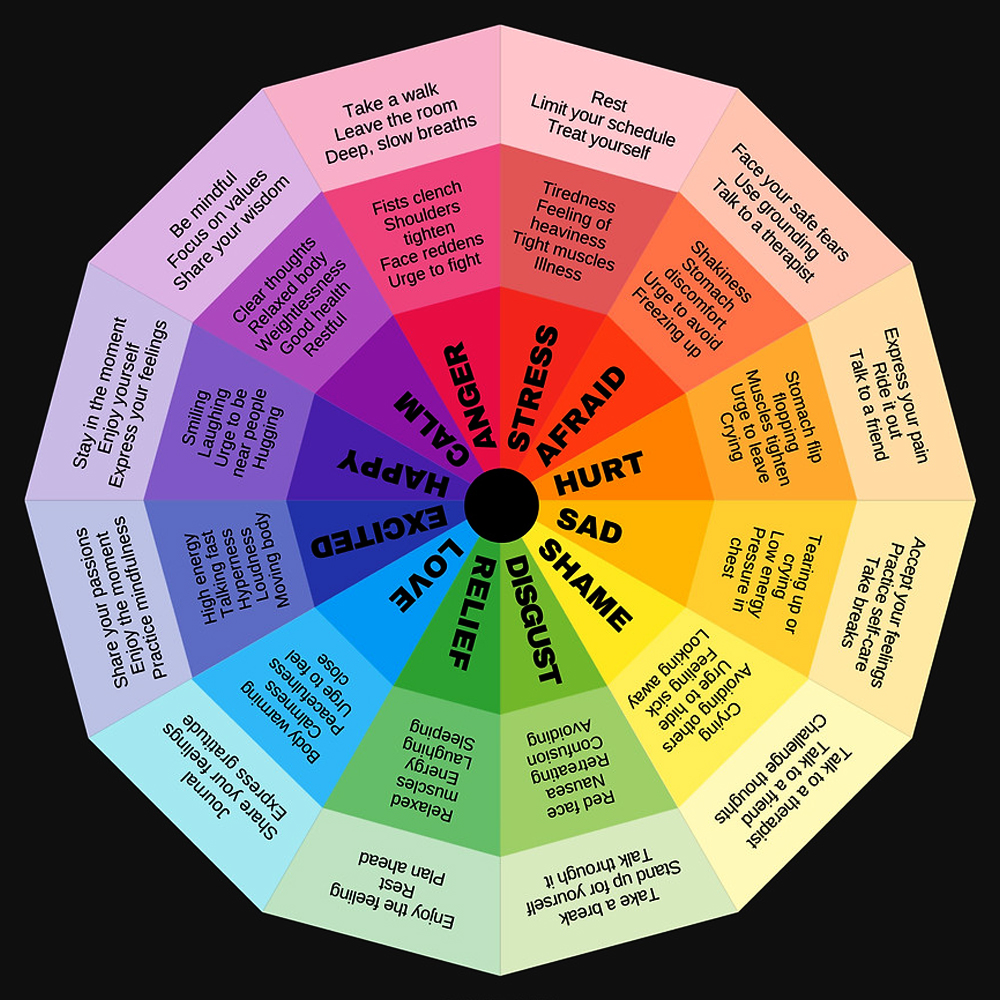
Reading the inner circle
In the inner circle, the wheel consists of eight emotions, each of which is the direct opposite of the emotion on the other side (or as close as can be reasonably achieved), while the emotions that are next to each other are somewhat related to each other, albeit sometimes quite loosely.
For example, ecstasy is the opposite of misery, and loathing is the opposite of admiration, while ecstasy and admiration are more similar to each other than they are different.
The inner emotions are some of the simplest to recognize, but if you think about them you will realize that they are actually often created by a combination of other more advanced emotions, as shown in the second circle.
Reading the second circle
In the second circle, there are sixteen more complex emotions, each of which has an opposite on the other side of the circle, with emotions next to each other being even more closely related to each other than those in the inner circle, due to there being more of them.
For example, joy is the opposite of sadness and anger is the opposite of fear. Also, each pair of emotions that touch a single inner circle emotion usually combines to form that inner basic emotion. For example, fear and apprehension create terror, while joy and serenity can lead to ecstasy.
You might be thinking that some of the emotions shown in the wheel look like rather strange opposites. For example, if you are fearful, is anger what you need?
Well, the answer is maybe. Maybe there’s a wrong that needs righting that you should get a bit angry about to help motivate you to deal with it. Or if something is making you apprehensive, perhaps developing a sense of bravado (a sort of false bravery you present to the world) will begin to help you to deal with it.
Related: How to Better Understand Your Emotions and Be In Touch with Them
Reading the two outer circles
As you progress from the center of the wheel to the outside, the emotions shown become ever more advanced, so that those in the outer two circles are comprised of the four-second circle emotions contained within their arc of the circle.
For example, love comprises a combination of serenity, joy, humility, and trust, while aggression comprises various amounts of bravado, anger, confidence, and enthusiasm. Again, as with all the emotions in the wheel, each of the two outer circle emotions has an opposite emotion on the other side, so that love is the opposite of hate, and optimism is the opposite of disappointment.
You can also compare the emotions in the two outer circles with those in the inner circle, where you will see that aggression can also be caused by a combination of rage and expectation, while wonder can arise from a combination of terror and amazement.
Spinning the wheel
Use this technique to analyze your current emotional makeup in order to identify the feeling or emotion you would most like to change.
Any emotion that touches another on the wheel is more similar to it than different, and whichever area of the wheel you look at is a related group of emotions, while the opposite area of the wheel features a related collection of opposite emotions.
Bearing all this in mind here’s an exercise you can try to analyze how you feel right now:
- Relax and try to clear your head of all thoughts.
- Slowly spin your eyes around the wheel. As you do so keep reading the emotions until you start to feel drawn to a certain section.
- After a while, you’ll make a decision and should place your finger on the exact spot you feel your mind is at right now.
- Once you have chosen your place on the wheel it’s time to look at all the emotions at or touching that point.
If you ended up pointing at anger, for example, you now have a tool to help you analyze why this is how you feel. In this case, it is very likely that one or more of the surrounding emotions (rage, bravado, contempt, and confidence) is also affecting you, and that some of the other nearby ones (such as aggression and despair) may also be a problem.
Armed with this information about your current emotional state you will be better prepared to tailor your personal improvement exercises (such as creative visualization) towards altering your particular mood and feelings.
For example, if you selected the sadness area of the wheel, your objective will be to minimize those emotions near it that you dislike the most and to increase those on the exact opposite side of the wheel (joy, and the emotions surrounding it) that you most desire to feel.
Of course, if you selected a positive emotion section of the wheel that you are happy with then great. But the wheel is still useful to you in that you can see exactly what types of positive emotions you are feeling right now, and you can decide whether or not you wish to work on increasing any other positive emotions nearby.
Related: 15 Art Therapy Exercises to Banish Anxiety and Channel Your Emotions
The point of the wheel is to never be too specific in analyzing the words that you select. We are very complex beings and have vastly more than 32 emotions. Those shown in the wheel can only ever be an approximate subset of the whole of human emotional experience.
Bearing this in mind the idea of this technique is to examine the general areas around the point on the wheel you choose and its opposite location. By considering these two general areas (the point you selected and it’s opposite) you will help put your emotional makeup into a deeper perspective.
Just like weighing yourself too often when dieting (and consequently seeing the scales read all over the place), if you spin the wheel on consecutive days, or even at different times of the same day, you may well choose a different place on the wheel.
However, after you have done it a few times over a few days, you are likely to find that on average the spot you point at is in the same general area. Therefore to see how your emotional life is developing on average, it’s probably better to perform this technique from time to time rather than frequently.
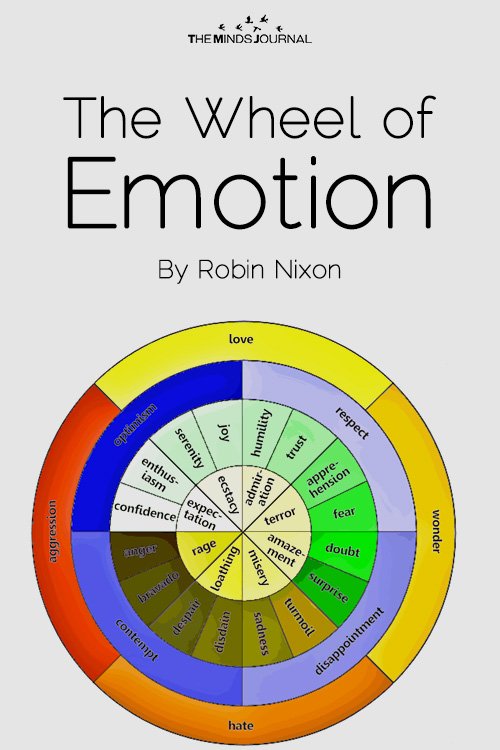
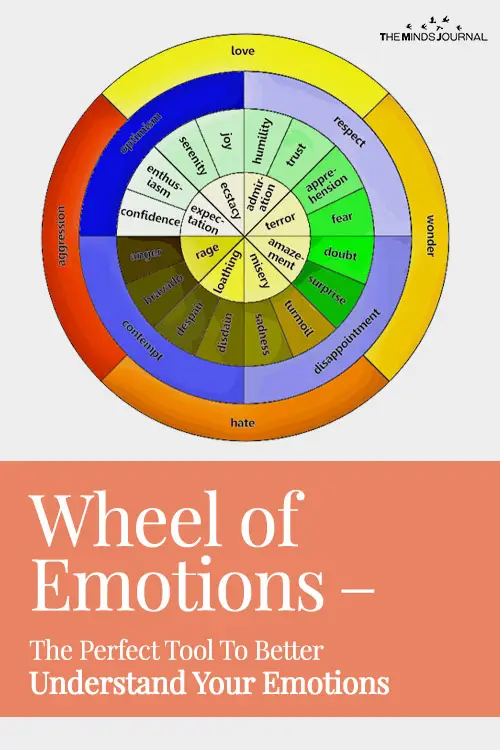
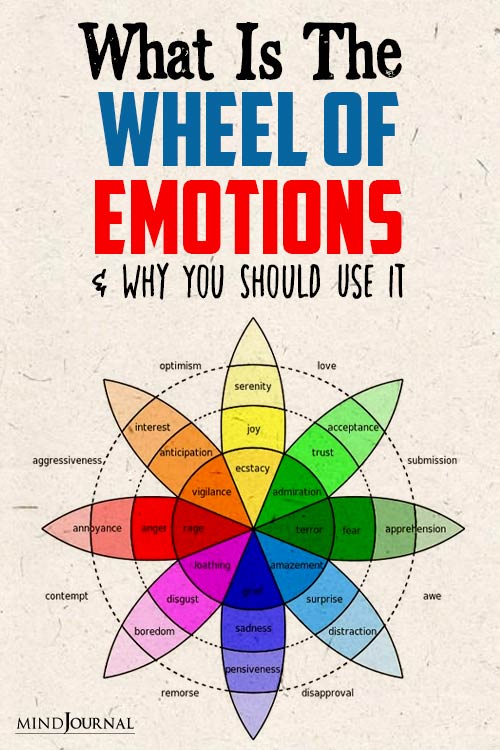
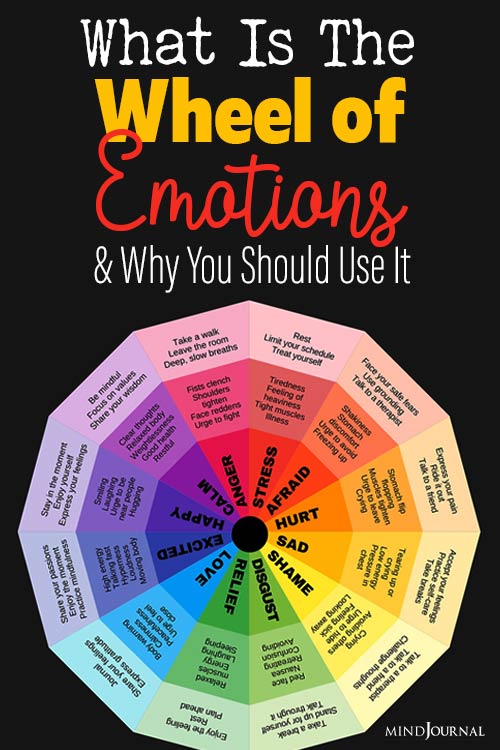
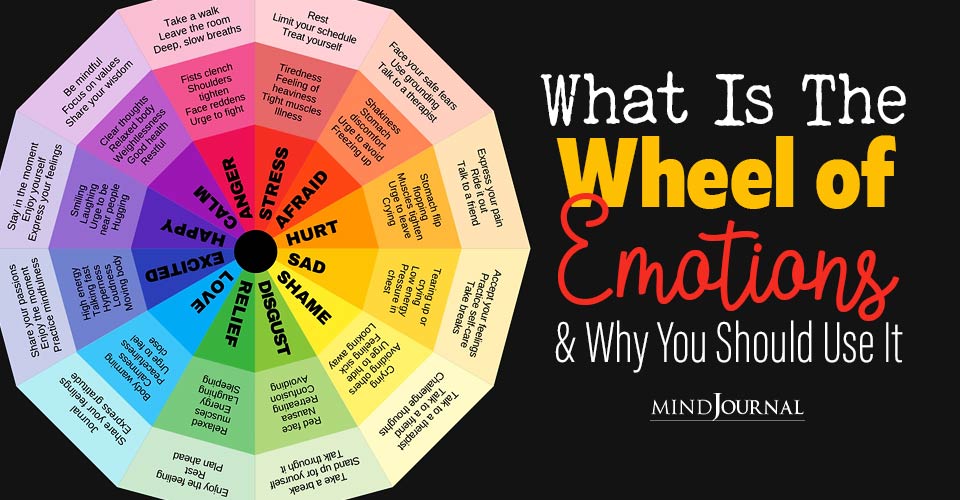
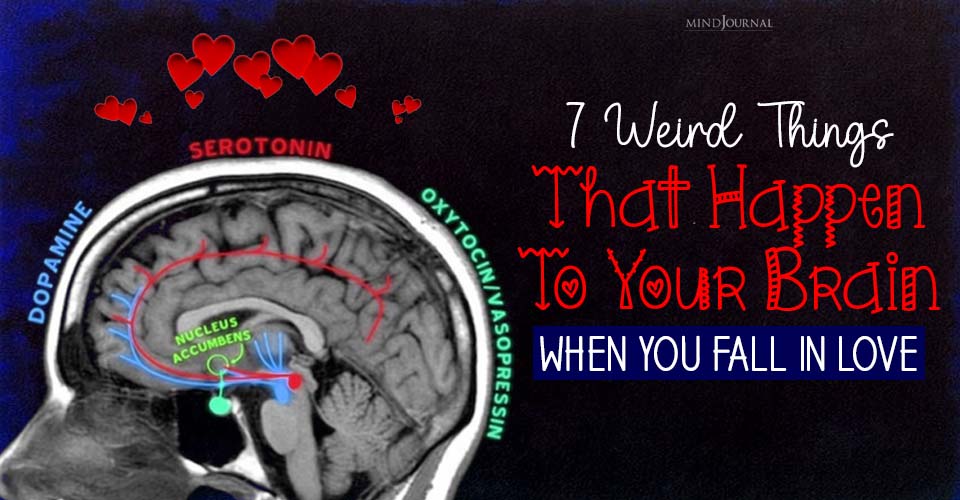
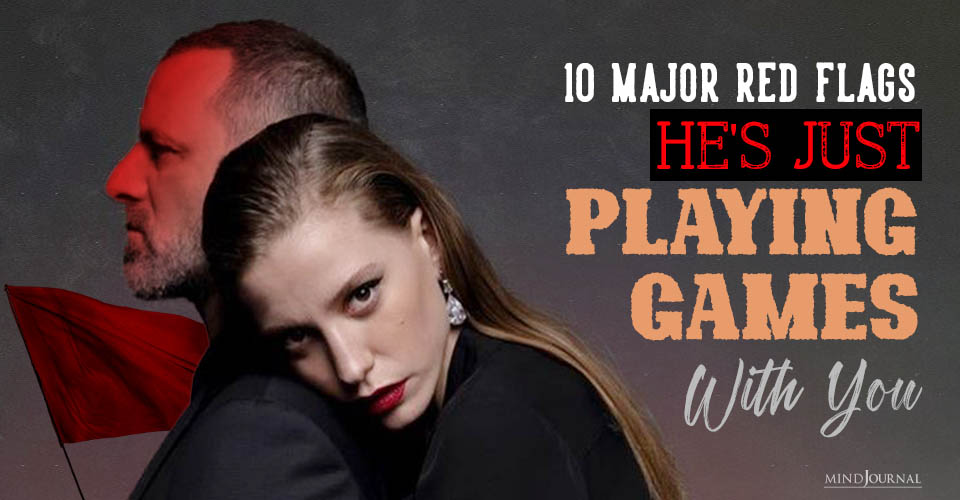
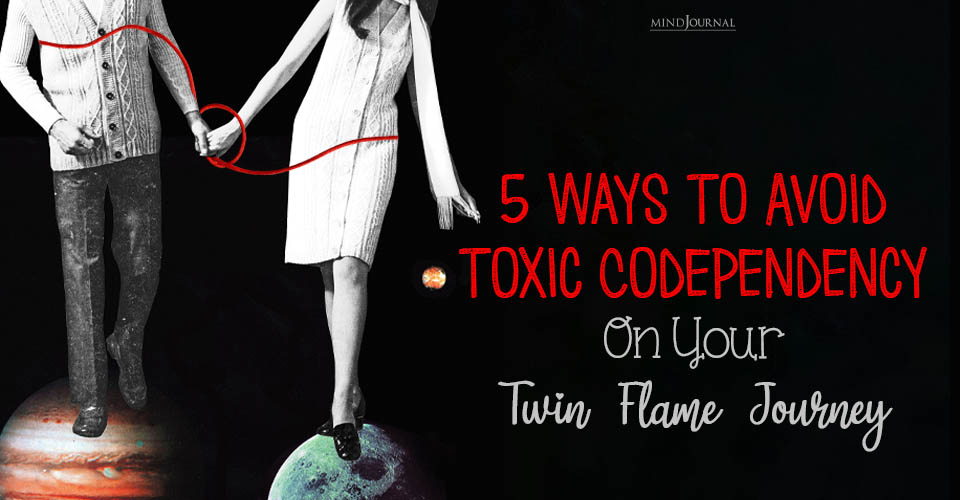
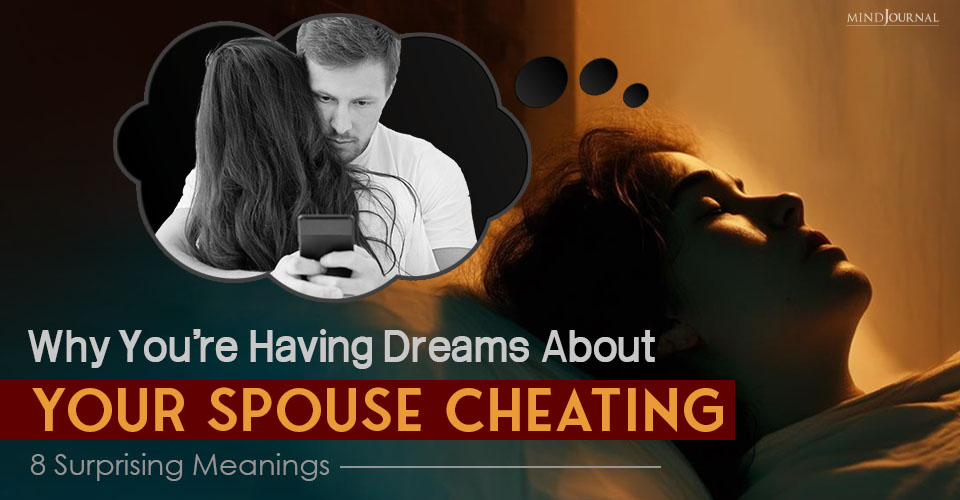

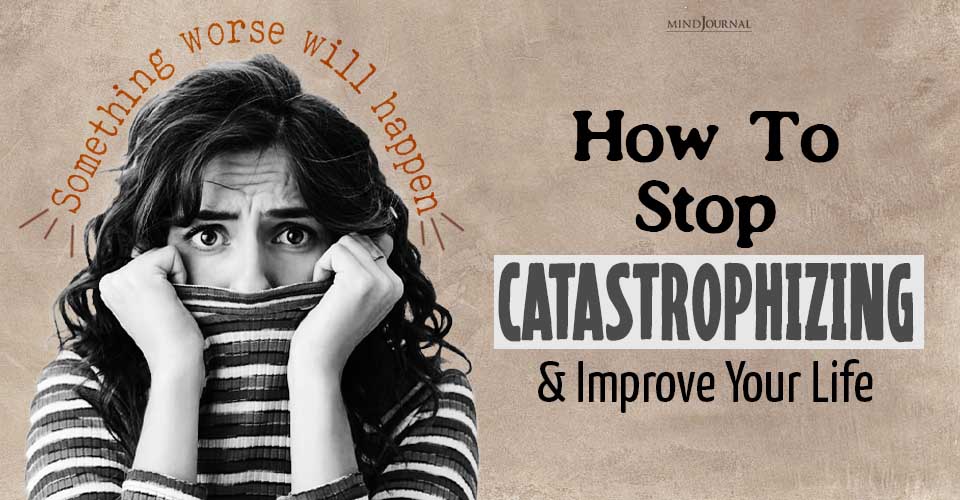
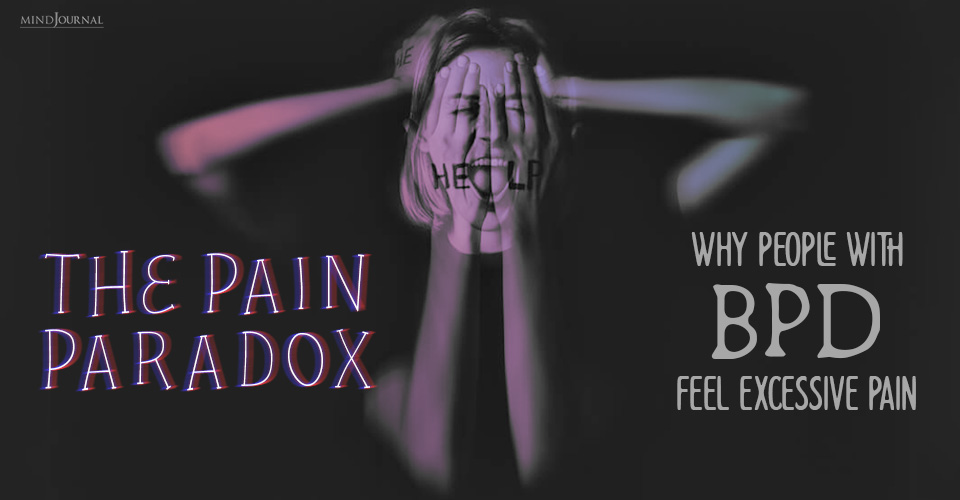
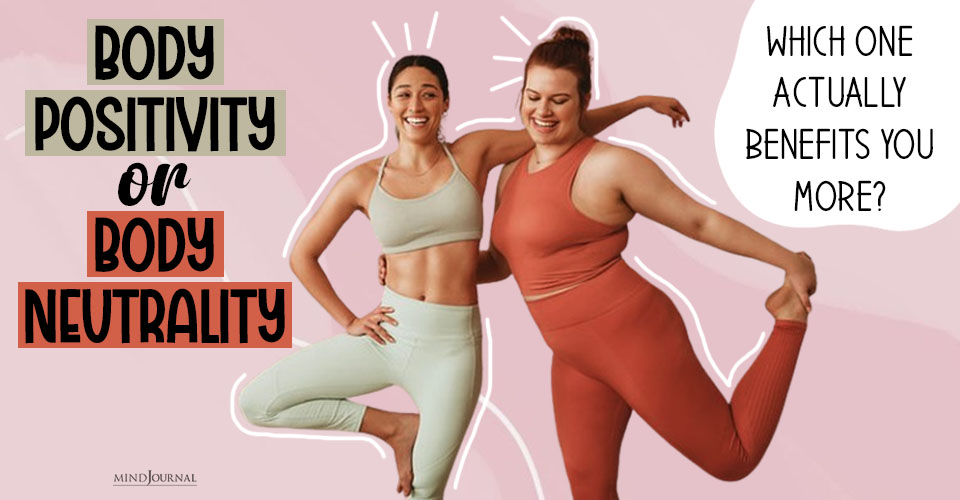
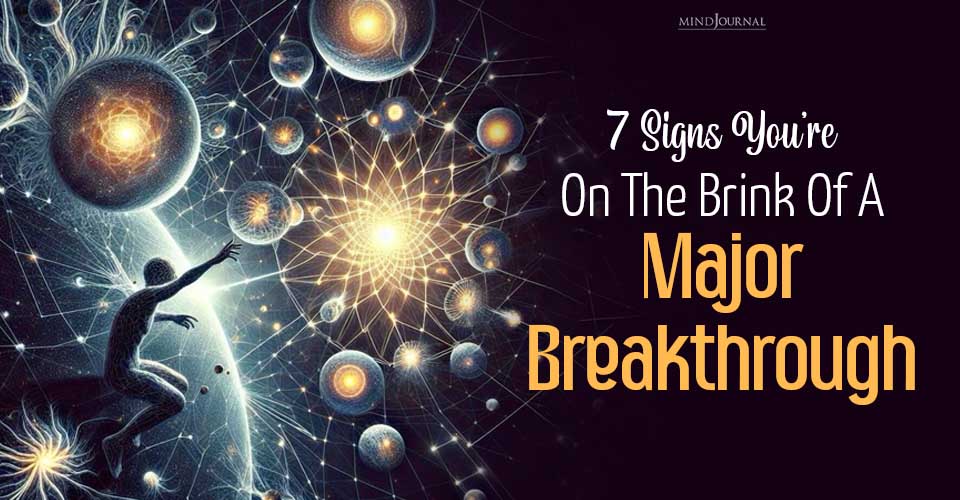
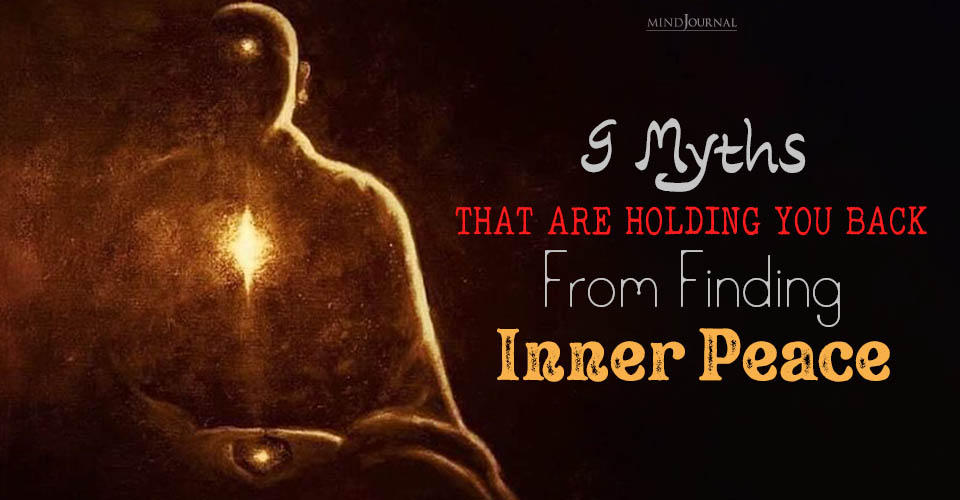

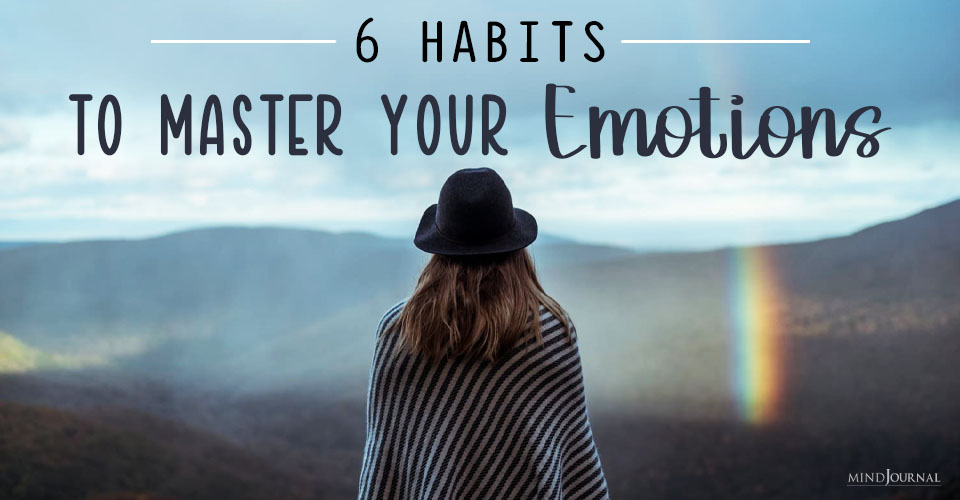
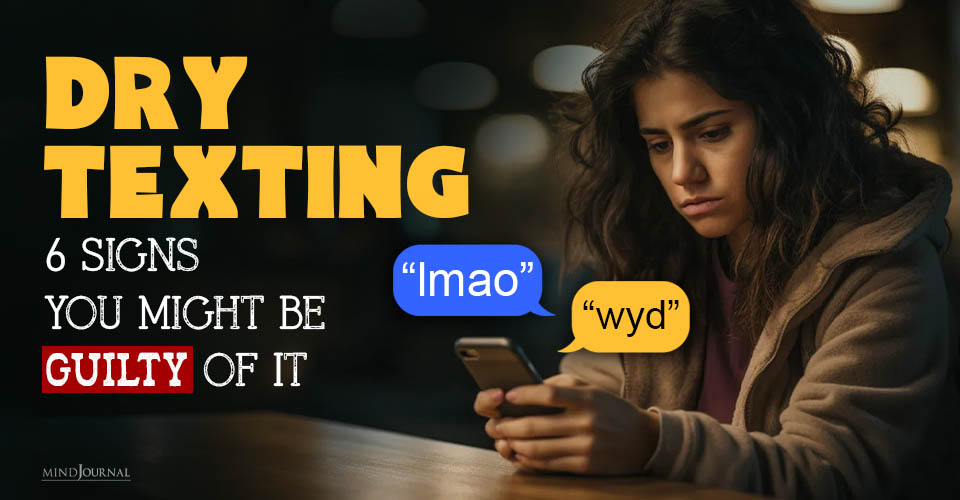
Leave a Reply
You must be logged in to post a comment.